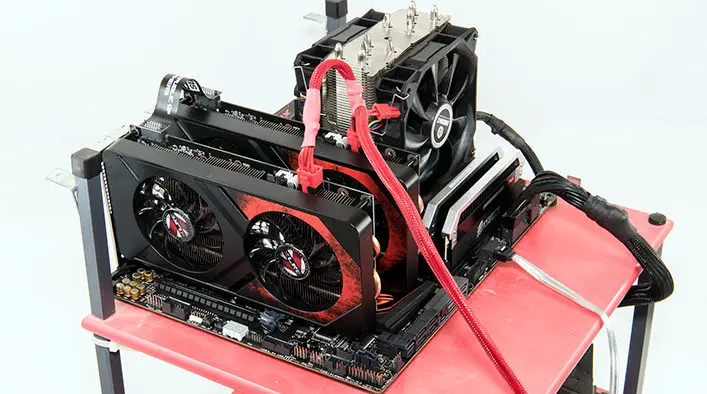Final Score: 83%
Out of entirety of the Seagate Guardian 510 models the IronWolf 510 is easily the most impressive in a lineup of already excellent options. Yes, it is not nearly as fast at writes as the ‘Cuda 510 options (let alone the newer PCIe 4.0 based 520-series) but what it lacks in shear speed it easily makes up for in consistency and reliability. Make no mistake, the other Guardian 510s and newer 520s are extremely reliable models. It is just the design team for IronWolf 510’s number one priority was reliability and stability. Not shear speed, and it makes zero apologies for being a master at very specific tasks. Thus, anything that could even potentially reduce consistent performance or reliability was defenestrated out the nearest window faster than a Czech Burgomaster at a Hussite rally.
This laser like focus on consistency and reliability are key to understanding the IronWolf 510 and deciding on if it is right for your needs or not… as it is not intended for mass appeal or even a broad range of scenarios. It was tailor made for satisfying the very specific, and rather niche, caching needs of network attached storage servers (and appliances). So, while we love what Seagate has done, many may not be as enthused.
Some however will be enthused as many of those tweaks do pay real-world dividends. For example, while yes its short-term / ‘peak’ performance is nowhere near as good as the typical consumer grade NVMe SSD, its long term is about as good as you are going to find with PCIe 3.0 controllers using TLC NAND… as they are extremely similar. This consistency is due in large part to how the controller’s firmware actually handles the data. Instead of making promises that only can be kept when a pseudo-SLC buffer is handling writes, the IronWolf 510’s firmware ensures I/Os happen at what can physically be accomplished even under worst case scenarios. Nothing more, nothing less. This is why the IronWolf 510 really does not care if you are transferring 1MB, 1GB or 1TB of data at a go, or even doing a constant trickle (or stream or flood) of data 24/7/365. No matter what the demands, what you were sold / promised is basically the absolute minimum of what you will get ~99 percent of the time. Many will indeed find that much more appealing than ‘up to’ performance promises that typical NVMe drives make… it just will be less performance for typical home users who will rarely (if ever) exhaust say a FireCuda 510’s generous pseudo-SLC write buffer.
For others, the lack of a write speed and being ‘only’ twice as fast as the fastest SATA at write performance is more than made up for by the fact that it also can be hammered a lot harder than the typical NVME SSD without fear of killing the NAND (or your warranty). This in turn makes it a very solid option for those who download a veritable ton of data every day and cannot tolerate hard disk drive speeds. Others still will find the fact that it boasts true hardware and software-based power loss data protection extremely appealing.
These are all things that make the IronWolf 510 tailor-made for demanding scenarios. Scenarios that up until now very few M.2 drives could be considered a viable choice as they would possibly, maybe even probably, cause any typical NVMe drive to die an early death or worse still corrupt your precious data. Mix in excellent read performance with firmware that (almost) loves small file transfers as much as it does large file, sequential transfers and the IronWolf 510 is a stellar choice for prosumer and S/MB NAS caching duties. If that is what you plan on using it for… buy a couple for your new NAS or Storage server and get a boost in performance that is only matched by the boost in longevity. It really is that good and one of only a few we would trust to run in our non-enterprise orientated NAS servers.
Counteracting all this is the typical downsides of not being designed with a wide(r) range of buyers in mind. In the Seagate IronWolf 510’s case this means most of the side-effects of the above benefits make it a touch suboptimal for anything outside its intended market… especially at this drive’s price point. This is a shame, as having OCD levels of data protection would make the IronWolf 510 seemingly tailor-made for running the Operating System off of. Sadly, the lowered write performance that goes hand in hand with using an older enterprise controller with ultra-conservative firmware will result in less-than-ideal real-world results given its current asking price.
Hopefully the eventual “IronWolf 520” will render this issue moot through shear brute force via faster NAND and a faster controller. If/when that happens Seagate may just indeed have the ‘perfect’ all-round NVMe series on their hands. One where the downsides are just not as noticeable and yet the upsides will be noticed by all. Until then, the IronWolf 510 is an excellent choice for its intended market, but it may be a touch too niche for general purpose duties and thus rather hard to justify outside said niche. As long as you understand what it does and does not bring to the table your decision should be relatively easy. Either way, the IronWolf 510 series is an excellent addition to Seagate’s Guardian Series and easily deserves its own “520” make-over.


The Review
Seagate IronWolf 510 1.92TB M.2 NVMe
Out of entirety of the Seagate Guardian 510 models the IronWolf 510 is easily the most impressive in a lineup of already excellent options. Yes, it is not nearly as fast at writes as the 'Cuda 510 options (let alone the newer PCIe 4.0 based 520-series) but what it lacks in shear speed it easily makes up for in consistency and reliability.











